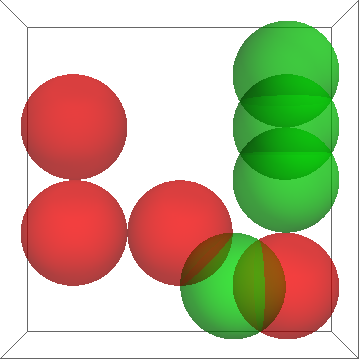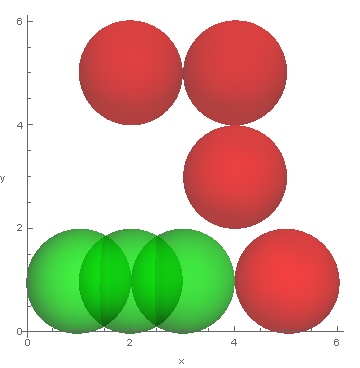I have a grid of values generated from a MATLAB evaluation. Most of these elements are 0, some 0.5 and the remainder 1. I'd like to write a mathematica script which reads in the CSV and then, in every position where there is a 1, I'd like it to create a Graphics3D red sphere of radius 1, and in every position where there is an 0.5, a green sphere of radius 1. However, I'm not sure whether the best approach is to use loops or something more natural in Mathematica. To illustrate, here's a sample 5 x 5 matrix;
M = {{0, 0, 0, 0, 0.5}, {1, 0, 0, 0, .5}, {0, 0, 0, 0, 0.5}, {1, 0, 1, 0, 0}, {0, 0, 0, 0, 1}}; I can get all the ones and halfs from the grid as follows;
Ones = Position[M, 1]; Halfs = Position[M, 0.5]; OneLength = Length[Ones]; HalfLength = Length[Halfs]; Xpos = Part[Part[Ones, 1], 1]; Ypos = Part[Part[Ones, 1], 2]; Where I get the lengths in case I need to run a loop - which I'm trying to avoid. Similarly the Xpos and Ypos give a co-ordinate I could loop but I'm sure there's an easier way. In essence, I want to end up with a picture like this for the sample data above;

In the example above, I generated it manually using
j1 = Graphics3D[{Opacity[0.5], Green, Sphere[{5, 6 - 1, 0}]}]; j2 = Graphics3D[{Opacity[0.5], Green, Sphere[{5, 6 - 2, 0}]}]; j3 = Graphics3D[{Opacity[0.5], Green, Sphere[{5, 6 - 3, 0}]}]; j4 = Graphics3D[{Opacity[0.5], Green, Sphere[{4, 6 - 5, 0}]}]; g1 = Graphics3D[{Opacity[0.5], Red, Sphere[{1, 6 - 2, 0}]}]; g2 = Graphics3D[{Opacity[0.5], Red, Sphere[{1, 6 - 4, 0}]}]; g3 = Graphics3D[{Opacity[0.5], Red, Sphere[{3, 6 - 4, 0}]}]; g4 = Graphics3D[{Opacity[0.5], Red, Sphere[{5, 6 - 5, 0}]}]; Show[j1, j2, j3, j4, g1, g2, g3, g4] Notice that I've subtracted the y element from 6, as Matlab starts its y-count from the top down rather than from the axis, so any matrix I get in from Matlab will need something like this to Y-flip. Is there a clever way to automate this, using table or otherwise which will circumvent loops? If loops are required, what is the most efficient way of creating one? I will eventually be working with 200 x 200 arrays so manual manipulation would be best avoided! Thanks in advance...

